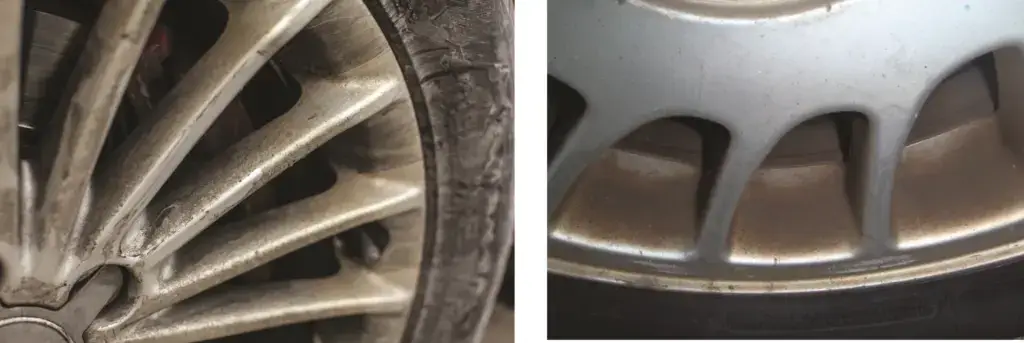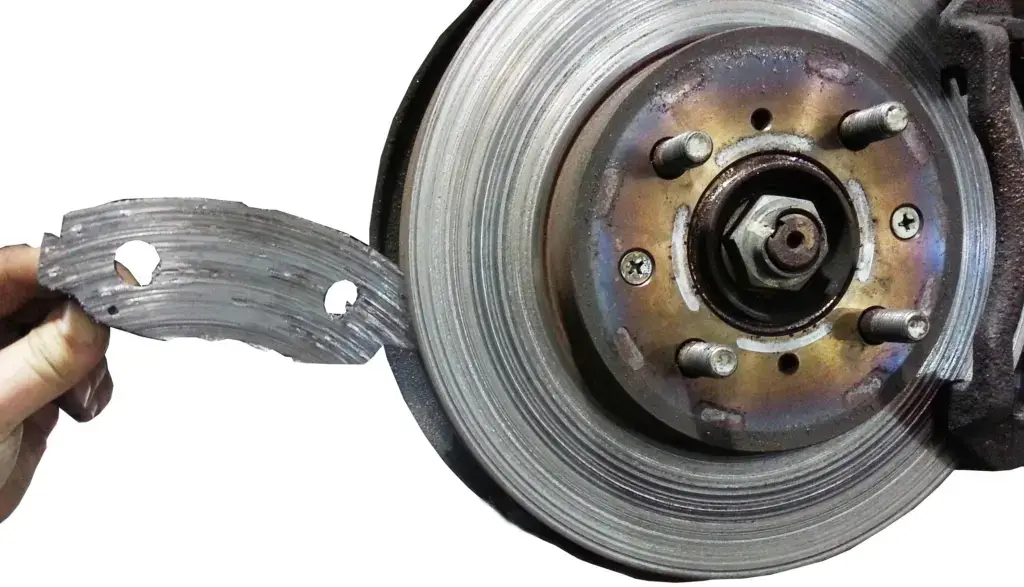Brake dust on wheels
Is excessive brake dust on a wheel a sign of a brake problem?
Yes. When you see excessive brake dust on just one wheel, that’s a sign of a problem with the brake on that wheel. Here’s why it happens and what to check. Keep in mind that all brake systems create dust on your wheels. The key word for this article is “excessive.”
A seized caliper causes rapid brake pad and brake rotor wear
If the caliper slide pins corrode and seize, or the brake pads seize in the slides, the brake caliper can’t release properly. That prevents the brake pads from moving away from the caliper when you back off the brake pedal. The continued rubbing causes the brake pad and rotor to wear out, causing excessive brake dust to form on your wheels.
A seized caliper can cause brakes to wear down to metal-on-metal
If the brake caliper or pad can’t release from the rotor, the friction material can wear off completely until the point where you’re braking metal-on-metal. All the brake dust from pad wear, backing plate wear and rotor wear will show up on that wheel. Here’s what metal-on-metal looks like.
Brake dust is normal, but excessive brake dust on one wheel is not
All brakes produce some brake dust. Semi-metallic brake pads produce the most brake dust, while non-asbestos organic (NAO) and ceramic brake pads produce far less dust. So excessive brake dust on one wheel is the sign that something’s wrong at that wheel.
Check the brake pads and caliper on the wheel that’s producing the most brake dust
Remove the wheel. Disconnect the caliper and check both the inboard and outboard pad for movement in the pad slide area. Then check the caliper slide pins for easy movement. Remove any rust in the abutment slide area and lubricate with high temperature brake grease. Lubricate the caliper slide pins as well.
©, 2023 Rick Muscoplat
Posted on by Rick Muscoplat

